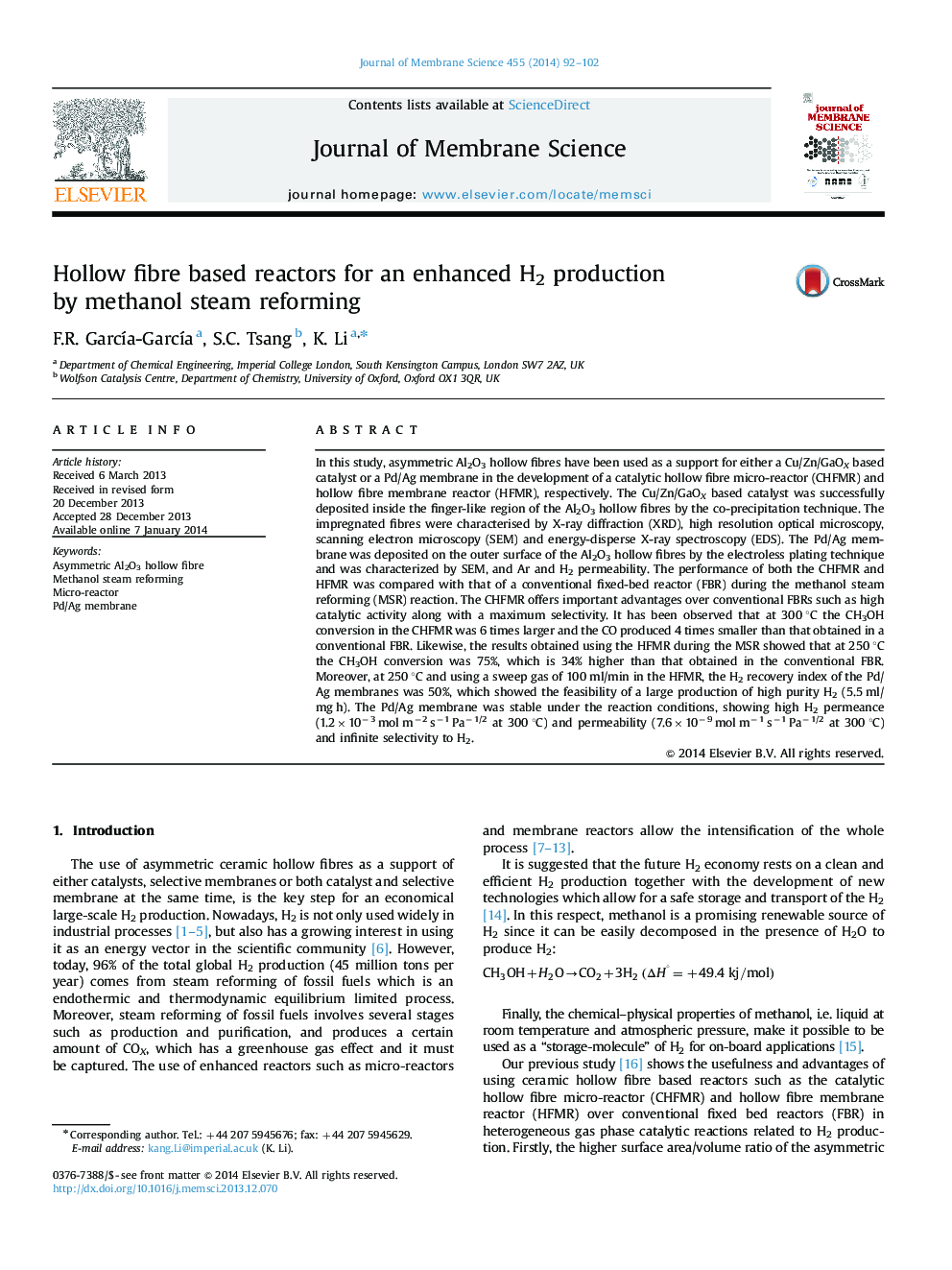| کد مقاله | کد نشریه | سال انتشار | مقاله انگلیسی | نسخه تمام متن |
|---|---|---|---|---|
| 633888 | 1456044 | 2014 | 11 صفحه PDF | دانلود رایگان |

• Two new ceramic hollow fibre based reactors have been developed: CHFMR and HFMR.
• CHFMR and HFMR performance was compared with that of a FBR.
• CHFMR and HFMR allow for an enhanced H2 production.
• CHFMR showed larger CH3OH conversion and smaller CO production than in FBR.
• Large COX free H2 production was obtained in the HFMR.
In this study, asymmetric Al2O3 hollow fibres have been used as a support for either a Cu/Zn/GaOX based catalyst or a Pd/Ag membrane in the development of a catalytic hollow fibre micro-reactor (CHFMR) and hollow fibre membrane reactor (HFMR), respectively. The Cu/Zn/GaOX based catalyst was successfully deposited inside the finger-like region of the Al2O3 hollow fibres by the co-precipitation technique. The impregnated fibres were characterised by X-ray diffraction (XRD), high resolution optical microscopy, scanning electron microscopy (SEM) and energy-disperse X-ray spectroscopy (EDS). The Pd/Ag membrane was deposited on the outer surface of the Al2O3 hollow fibres by the electroless plating technique and was characterized by SEM, and Ar and H2 permeability. The performance of both the CHFMR and HFMR was compared with that of a conventional fixed-bed reactor (FBR) during the methanol steam reforming (MSR) reaction. The CHFMR offers important advantages over conventional FBRs such as high catalytic activity along with a maximum selectivity. It has been observed that at 300 °C the CH3OH conversion in the CHFMR was 6 times larger and the CO produced 4 times smaller than that obtained in a conventional FBR. Likewise, the results obtained using the HFMR during the MSR showed that at 250 °C the CH3OH conversion was 75%, which is 34% higher than that obtained in the conventional FBR. Moreover, at 250 °C and using a sweep gas of 100 ml/min in the HFMR, the H2 recovery index of the Pd/Ag membranes was 50%, which showed the feasibility of a large production of high purity H2 (5.5 ml/mg h). The Pd/Ag membrane was stable under the reaction conditions, showing high H2 permeance (1.2×10−3 mol m−2 s−1 Pa−1/2 at 300 °C) and permeability (7.6×10−9 mol m−1 s−1 Pa−1/2 at 300 °C) and infinite selectivity to H2.
Journal: Journal of Membrane Science - Volume 455, 1 April 2014, Pages 92–102